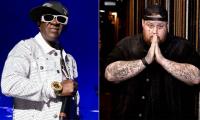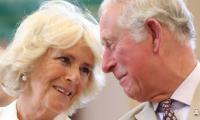“Model Minority” is an idea that emerged during the 1960s in the US that states that nonwhite groups of people are able to essentially revoke racial and socioeconomic oppressions, that pose as barriers to achieving and earning as much as whites, through hard work.
One of the main racial groups that are popularized as being a model minority group is Asians. According to the model minority myth, Asians are the racial minority group that managed to prosper in the US through hard work and education, hence setting an example for other marginalized racial groups to follow. Despite this, history shows that the idea of the model minority is a myth that was perpetuated by corporate media, as well as tokenizes oppressed nationalities to justify the bootstrap theory.
Asian-Americans are stereotyped as the model minority and as having significant proximity to whiteness and the upper class. This is not necessarily true given the history and continuation of how Asian-Americans have been and continue to be treated in the US.
Chinese migrants were seen as a “Yellow Peril” that is always foreign no matter for how many generations they have resided in the US. This orientalism and xenophobia was used to subjugate Chinese male workers as underpaid indentured servants, during the California Gold Rush of the 1850s and the construction of the Transcontinental Railroad.
Anti-Asian laws in the US further codified orientalism as part of the institutionally racist oppression of Asian-Americans. For instance, the Chinese Exclusion Act banned immigration based on national origin and required Chinese leaving the Us to receive special permits to return. Additionally, Chinese laborers, regardless of skill leave, were prohibited from entering Congress.
In 1860, California banned Asians from public schools and Asian children were rendered inferior in said institutions. Likewise, Executive Order 9066 authorized the internment of Japanese-Americans under US President Franklin Delano Roosevelt in 1942 during WWII, when the US was at a peak of anti-Japanese orientalism.
The elevated image of Asian-Americans spiked in the mid-1960s , greatly due to corporate media spreading the model minority myth and coinciding with growing tensions among African-Americans.
Given this, the model minority myth was applied differently to Asian-Americans and African-Americans because Asian-Americans were seen as a group that had risen up the social ladder and gained proximity to whiteness and the bourgeois class on their own, whereas African-Americans were seen as a people who gained privileges due to so-called handouts from institutions and getting by with less hardship due to that.
Both embodiments of Asian-American and African-American model minority myths also uphold bootstrap theory. Bootstrap theory emerged during the European era of immigration from 1880-1920 and is the idea that one simply has to work hard and “pull themselves up by the bootstraps”..
The idea of the model minority myth is a fallacy because in order for a group to be socialized as such, they have to assimilate into the dominant culture and gain proximity to whiteness by all means or have racial stereotypes imposed on them. Model minority and bootstrap theory are rooted in capitalist and individualist trains of thought, white supremacist systems of oppression and encourages oppressed nationalities to compete for capitalist, white supremacist approval.
This article has been excerpted from: ‘History of the Model Minority Myth in the US’.
Courtesy: Counterpunch.org
People stand in line up as election officials check their ballot papers during voting general election at a polling...
Women show their voter identity cards as they stand in a queue before casting their votes in Agartala. — PTIThe 18th...
Former prime minister Imran Khan. — Instagram/ imrankhan.ptiAn old saying has it that “when you dance with the...
Kashmiris in Indian illegally occupied Kashmir protesting against the Indian occupation as the forces of India looked...
A representational image showing residents walking at a wholesale market in Karachi. — AFP/FileOnce again there is...
A representational image showing late Pakistani human rights activist and Supreme Court lawyer Asma Jahangir. —...







